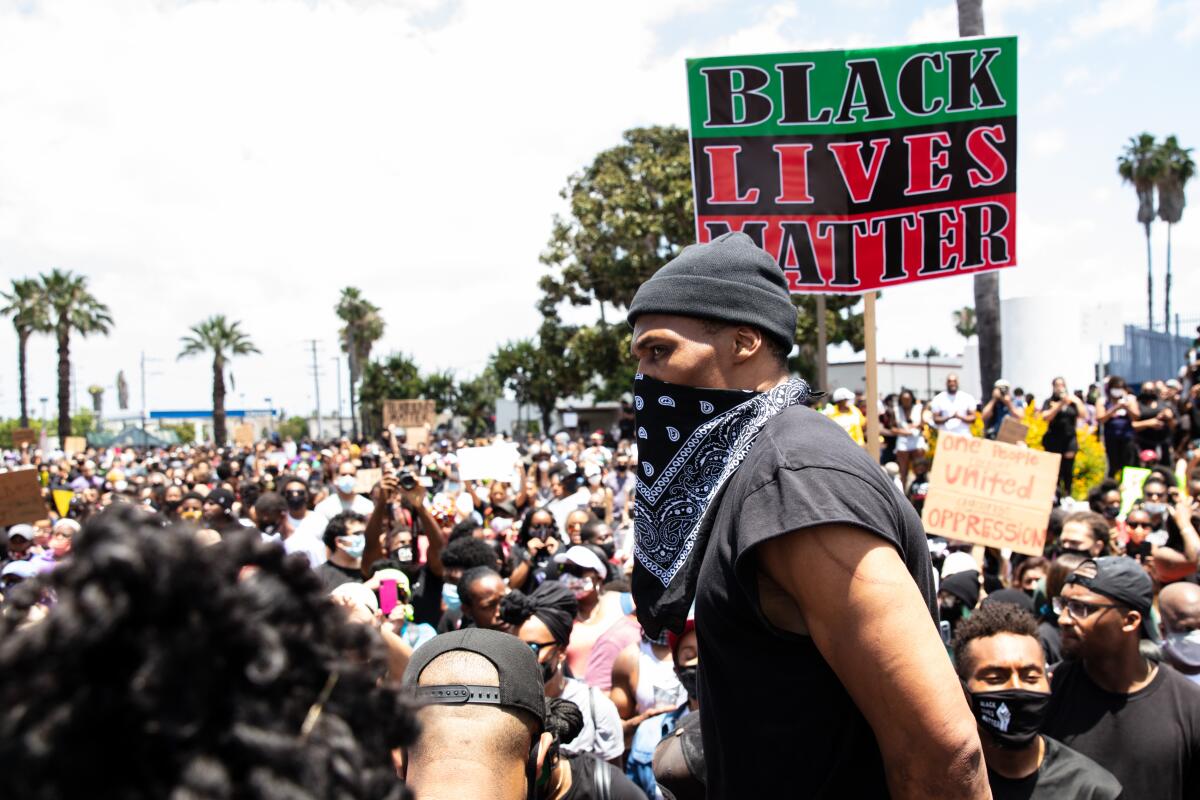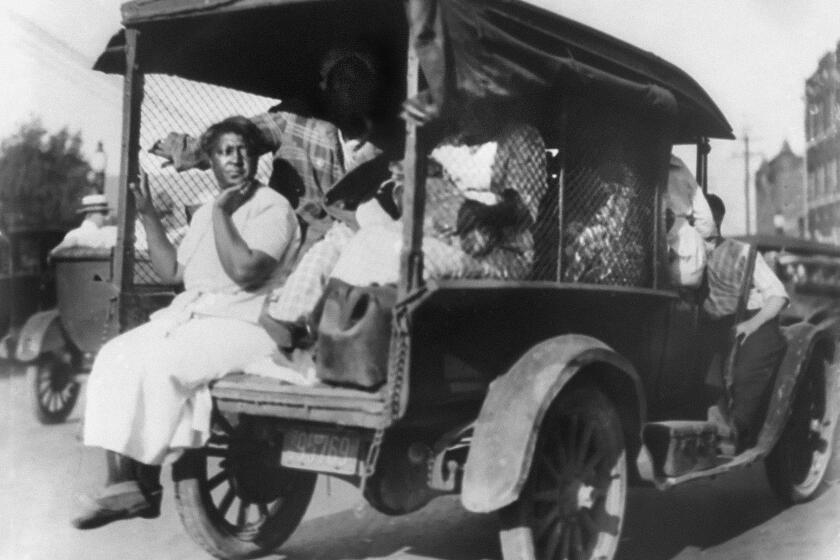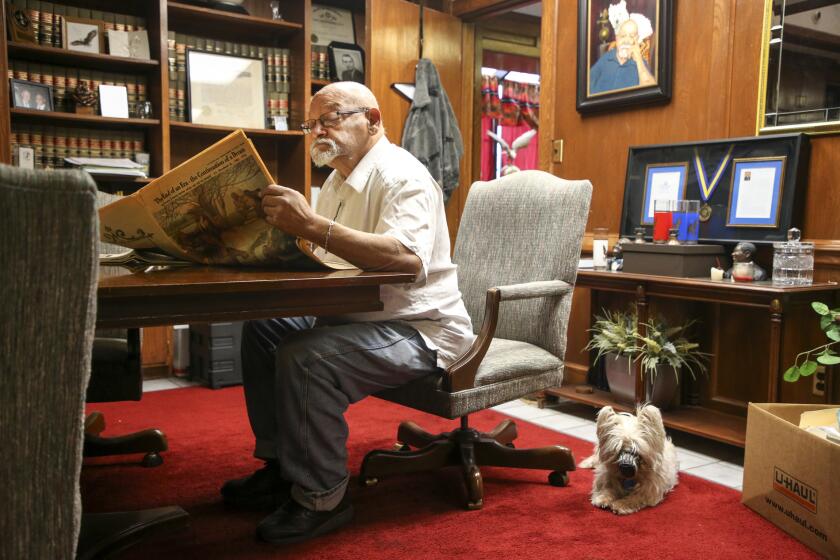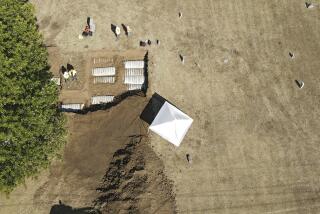Russell Westbrook makes history again, with a documentary called ‘Tulsa Burning’

- Share via
Russell Westbrook made NBA history earlier this month when he passed Oscar Robertson with his 182nd triple-double, the most all-time. History has been on the mind of the 13-year NBA veteran and one of sports’ most intellectually curious minds for some time, but not merely basketball history. On Sunday the documentary “Tulsa Burning: The 1921 Race Massacre,” of which the Washington Wizards guard is an executive producer, will air on the History Channel.
Westbrook first heard about the race riots, which marks its centennial this weekend, when he was an adult. After growing up in Southern California and playing college basketball for UCLA, he was drafted by the Oklahoma City Thunder in 2008.
Russell Westbrook has set the NBA record with his 182nd triple-double, surpassing the mark set by Oscar Robertson in 1974.
“The Tulsa Race Massacre was not something I was taught about in school or in any of my history books,” he said in a statement when the documentary was announced in February. “It was only after spending 11 years in Oklahoma that I learned of this deeply troubling and heartbreaking event. This is one of many overlooked stories of African Americans in this country that deserves to be told. These are the stories we must honor and amplify so we can learn from the past and create a better future.”
The two-hour documentary is helmed by award-winning directors Stanley Nelson (“Freedom Riders,” “Freedom Summer”) and Marco Williams (“Two Towns of Jasper,” “Crafting an Echo”) and utilizes more than a dozen interviews, historical photographs and reenactments to tell the story of Black Wall Street, the name that Booker T. Washington bestowed on the Greenwood District of Tulsa for the economic opportunity created by the city’s Black community. The film traces the community’s origins, from politician Edwin McCabe rallying Black people to move to Oklahoma with the vision of having an all-Black state to local businesses run by John and Loula Williams, the Black couple who bought the first car in Greenwood.
The dream of an economically and politically empowered, self-run Black community came to an end on May 31, 1921, when, sparked by a false rumor that a young Black man had tried to sexually assault a white teenage girl, white mobs burned Greenwood to the ground. An estimated 100 to 300 Black men, women and children were killed and thousands more were displaced. Only much later would the tragedy — which for much of the last century has been glossed over in the state’s school curricula — acquire a name: the Tulsa Race Massacre.
Hollywood execs once dismissed the idea of mass interest in the 1921 Tulsa Race Massacre, but the success of HBO’s Emmy-winning series breathed life into a raft of documentaries.
Nobody was charged for any of the crimes committed on May 31 and June 1, 1921, a fact that lies at the heart of the film. The narrative follows the recent excavation of a mass grave at Oaklawn Cemetery, which historians and community activists hope will provide more answers to the tragedy.
Marco Naprin grew up in his grandmother’s house located in the neighborhoods that currently occupy the Greenwood District. He heard stories of the race riots growing up.
“It might not ever be no closure, but the awareness is there,” he said while overlooking the construction site at the cemetery, “and that’s almost enough for me.”
A black-owned Oklahoma newspaper would not let the state forget the day white mobs murdered hundreds of African Americans in Tulsa.
The film reminds viewers that the injustices of one hundred years ago still hang over both the city and 21st century America. The 2016 death of Terence Crutcher at the hands of Tulsa police is examined, as is last summer’s national racial reckoning in the aftermath of the murder of George Floyd in Minneapolis. Westbrook has been a longtime activist for social change through his Why Not? Foundation, which he founded in 2012, and he marched with local leaders in Compton last summer after Floyd’s murder.
“I challenge all you guys to continue to stick together through thick and thin,” he said at the Compton peace walk. “Continue to fight for one another. Continue to lift one another up. Continue to support businesses. Continue to protect your own. Protect your team. Protect your family.”

For all the tragedies covered in the documentary, “Tulsa Burning” strikes a hopeful tone, too, when the Rev. Robert Turner, pastor of Vernon AME Church, discovers that his church’s basement, which was erected in 1919, survived the race riots.
“We have something left, right?” he said. “All is not lost.”
"Tulsa Burning: The 1921 Race Massacre"
Airs 5 p.m. PDT May 30 on The History Channel
Will be available on HULU as a two-part series this summer
More to Read
Go beyond the scoreboard
Get the latest on L.A.'s teams in the daily Sports Report newsletter.
You may occasionally receive promotional content from the Los Angeles Times.














